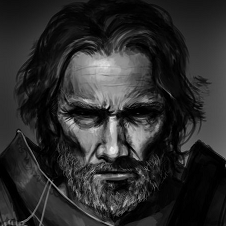-
Posts
38,420 -
Joined
-
Last visited
Content Type
Profiles
Forums
Events
Gallery
Everything posted by Ace-Garageguy
-

K&S ENGINEERING STAINLESS STEEL FOIL
Ace-Garageguy replied to fseva's topic in Model Building Questions and Answers
At a minimum thickness of .002", I'm about 98% certain it's WAY too stiff for a BMF replacement. From what I've seen, BMF gives an excellent chrome effect, if properly done. The stainless foil MAY have a use as replacement chrome spears, etc., if a car has been shaved. Still be a bugger to stick it down cleanly though. -

Tucker kit? YES!
Ace-Garageguy replied to Jon Cole's topic in General Automotive Talk (Trucks and Cars)
Kinda sounds like one of my exes. -
The Chebby smallblock is still the most bang for the buck going in the 1:1 world, and will probably be for some time to come. Tired as I am of seeing them in everything, if I were going to build a V8 rod, I'd go little Chebby just to get something fast, on the road quickly. ...Well, I would have if I hadn't just happened to come upon a '49 Olds 303, complete with Hydramatic gearbox, for $250.
-
Sorry about your dog, Joe. Nice photo. Something very endearing about that face.
-
OK..."or it can be something that's been camping out on your shelf for 10 years, 95% complete."
-
I build real customs and rods for a living, and I can certainly identify with the frustration of dinging something like that and having no cost-effective and acceptable way to repair it. I'm pretty intensely detail-oriented about my own work, and if that was my part, I'd regularize the damage with small files and sandpaper so there were no jaggedy edges, and so the nick looked to have been machined intentionally rather than having happened accidentally. Be CAREFUL to not scratch any of the surrounding area with the files or abrasives. Then, I'd carefully mask it and shoot a coat or 2 of Duplicolor green self-etching primer on the spot. The Duplicolor is quite transparent and allows the color of the metal to show through somewhat if you only shoot a few coats. Frankly, I think that's about as good as you could possibly hope to get here. Done right, it will not draw your eye like an obvious jagged, bare alloy "oops" does.
-

Drilling distributor caps
Ace-Garageguy replied to BigTallDad's topic in Tips, Tricks, and Tutorials
Sheer genius !! I WILL be using your tip every time in the future. -
Absolutely correct, but I have a feeling he may have meant "there's never been a 4-71 blower kitted " (though I seem to have several bowers that look just like 4-71s in my many-many years worth of mystery stash). I think Barney Navarro is credited as the first successful user of the WWII surplus GMC 2-stroke diesel engine blowers in hot-rod and race-car applications
-
But like the photo in post #78 so eloquently illustrates, if Revell could get it dead-balls-on 45+ years back, what's the reason (excuse) for missing it by a mile today? Speakin' of which, I have a dated 1969 release of the Revell '31 "Sedan Delivery". If the boys workin' now can't get it right, why not just copy existing revell parts from '69 ?
-

1937 RR woody... I mean, "shooting brake"...
Ace-Garageguy replied to Harry P.'s topic in WIP: Model Cars
A Roller Phantom III woody...really cool. Here's a real one...sorta. https://www.bonhams.com/auctions/20498/lot/458/ -
More "pro-street-racer" than "pro-touring". Built this back in 2012. 4" scale top-chop, C5-R guts, custom cage, front-blown Chebby big-block set way back in the chassis, few other mods...
-
Good job. I've dropped ten since the first of the year, trying to get down to 175 again...which was the last time I thought I looked kinda-OK not-too-fat...six years ago. Sure is hard to do when you love food. Every time I turn up the exercise, I just eat more.
-
Kit a Tucker, I'm in for several. Chopped and slammed, two-doored fender-skirted...how cool would that be? I'd like some Tucker engines to use in other stuff too. And I have zero interest in diecasts for the most part...kinda see them as toys, "collector items", or models for folks who can't or won't be bothered to build models. The main reason I've bought several of the Hudson run and will buy several of the rest of them is because of the relative dearth of interesting '50s iron in kit form. I'd like to see '50s Buicks, Caddys, Ponchos, Lincolns and Mercs too. And mo' def a bullet-nose Stude. Far as '70s iron goes, I lived through them as a young man and found most of the US cars built then to be as boring as machines could possibly be. I remember thinking all the plastic wood, stick-on curlicues and fake landau irons, etc, would have been appropriate in a low-rent bathroom...not on a car.
-
Great idea, fine execution. I remember you well from over there, Welcome.
-

Cadillac 354 color?
Ace-Garageguy replied to chunkypeanutbutter's topic in Model Building Questions and Answers
As you've found, there was NO factory designation for a Caddy of 354 cu.in. displacement. Eshaver's right, but unless you're going for the look of a rod with an engine that's been swapped in as-is from the junkyard, it can be any color you like. Another thing to remember is that by the time many old engines made it to the boneyard, they would have most likely had major rebuilds, or at least top-end work, and mechanics and rebuilders were notorious for not painting things back in stock colors. One fairly large rebuilder in my area used to paint ALL their engines (Ford, Chevy, Dodge, Buick, etc.) something very close to John Deere green. -
The Chebby smallblock probably got it the kit 'cause that's what's in the vast majority of real-world hot-rods. A truly great engine by any definition, and also done to death over and over and over and over and over... Anyway, it'll be good to have a 1/25 '30-'31 A-bone shell to hack up, and it's sure to be a big improvement over the Monogram '31. The old Monogram 1/24 body was really not-so-hot...though I have a soft spot for it and have several... and it didn't really look right on 1/25 scale bits (and took a LOT of cutting down to get the right "feel" if you're familiar with the real thing). Let's hope somebody measures right and gets the dimensions right on the new model.
-
Got my computer back from the shop, lost data restored, and a separate massive internal backup drive installed to head off any future hair-pullers like this last one. The two guys who run the place are pretty sharp and really great about eating anything they don't get exactly right, which is why I don't mind paying them well for good work. One of their underlings lost most of the backup of my drive, but had apparently just forgotten what the files were named...and didn't notice that only 40 gigs of the hundreds of gigs on the old drive made it to the new one. The data was all on the shop server, just disjointed and mixed randomly with other stuff (photos under a Nikon program coming up as Word files in some cases???)...somehow...but seems to be back in place now.
-
Yes, and cloning it again would have been a viable option, but after going round and round a bit, the owner of the shop was able to find the backup his people made of the old drive and do a clean transfer on to the new drive. Just got her back today, and she seems to be a very happy machine indeed. Got a separate internal terabyte backup drive now too, just in case.
-

How can I access pics of my 1:1 car on my computer?
Ace-Garageguy replied to Monty's topic in The Off-Topic Lounge
Yeah, get a P-bucket account. It's almost so easy a cat can do it. Love the photo, by the way. -
One of the all-time best pieces of 1:25-1:24 model-car work I've ever seen, period. Man, that is beautiful.
